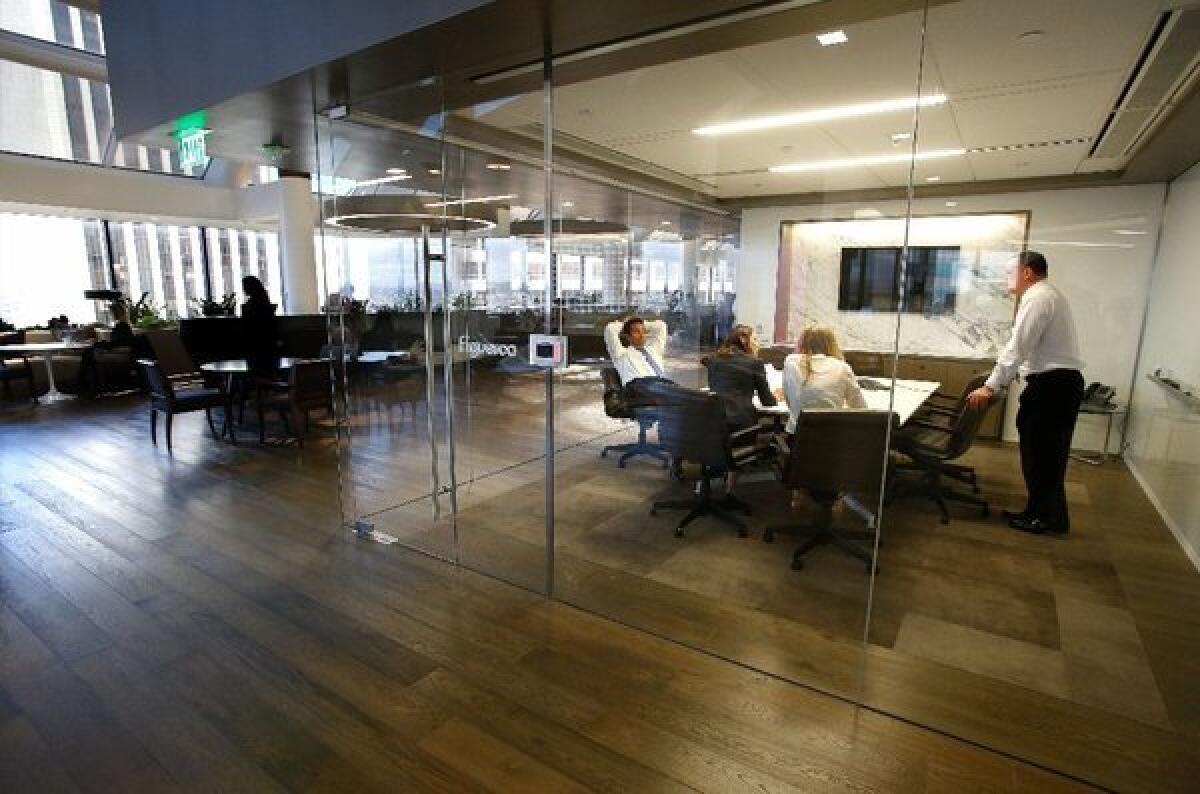How ‘mature’ is the performance of your office?

Real estate services firm CBRE Group Inc. has turned its downtown Los Angeles office into a “free-address” setup where nobody -- including the chief executive -- has a permanent desk.
Employees each morning pick up their laptops and telephone headsets from lockers and find a work station.
Workstations have telephones, keyboards and monitors that employees plug into, and they can sit, stand or even walk on a treadmill while working. There are media-equipped conference rooms for meetings and small booths for making private phone calls.
Some prefer to work near the front door in the heart of the office, which looks like a cross between an upscale hotel lobby and a coffee bar.
The new configuration launched in September is at the extreme end of the “workplace optimization continuum” defined by workplace expert Peter Miscovich of Jones Lang LaSalle. By his reckoning, the CBRE office is at the most advanced stage of what he calls “workplace performance maturity.”
PANORAMA: Inside CBRE’s L.A. office
Where does your office rank on the maturity scale? Miscovich breaks offices down into five categories:
1. Assigned Cellular. This is the “Mad Men” model that reigned supreme before wireless technology was available. Every desk is assigned and everyone with enough rank gets an office for that desk. The higher the rank, the bigger the office.
2. Open Plan Assigned. In this model there are fewer offices and more open space filled with desks. Often a mix of cubicles for support staff outside of offices for middle managers and executives.
3. Open Plan Flexible Support. Most companies are at this level, Miscovich said, where all work stations are assigned but the number of closed offices is minimal compared to the “Mad Men” days or the 1980s. Picture lots of cubicles or bench seating outside of glassed-in boss space and some open area perks like a kitchen or lounge.
4. Hybrid Mobility. This is a mix of assigned and unassigned work stations. Often the unassigned stations are intended for people who spend a lot of time outside the office. More space is set aside for impromptu meetings or work on tasks that can be performed remotely.
5. Full Mobility. Everyone goes mobile. There are no assigned work stations and people are free to work or collaborate in a variety of settings.
The future holds more and more mobility, Miscovich said, as technology improves and companies move to save money by reducing office size.
ALSO:
Former headquarters of Carroll Shelby sold
The concept of an ‘untethered’ office takes root
Prime downtown L.A. development site to be sold







